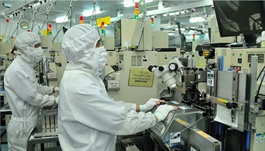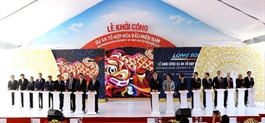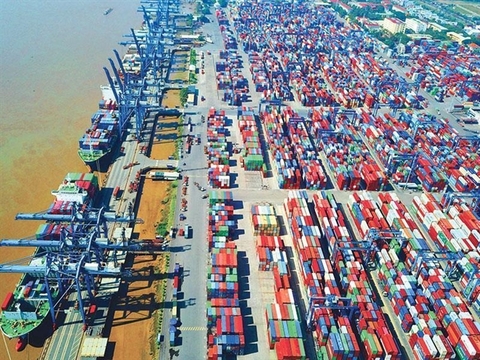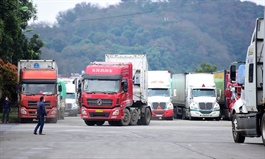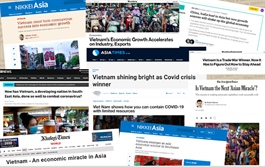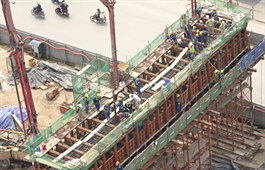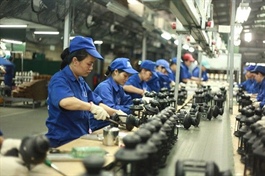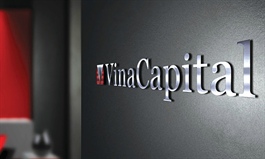The giddy rise of Vietnam’s steel billionaire
The giddy rise of Vietnam’s steel billionaire
Tran Dinh Long, dubbed the “king of steel,” had no experience in the steel industry when he decided to enter it anyway in the mid-90s.
Tran Dinh Long, founder and chairman Hoa Phat Group. Photo courtesy of Hoa Phat.
|
"All I had at the time was passion and a lack of fear," Long, founder and chairman of Vietnam’s biggest steelmaker, Hoa Phat Group, said in a recent interview with Bloomberg.
The company was in the beginning distributing machinery and equipment and furniture, but it was steel that ultimately took it to dizzy heights. Hoa Phat had a 32 percent share of Vietnam’s steel market as of August 2020, making it the biggest player in the industry, according to the Vietnam Steel Association.
The name Hoa Phat cropped up again and again in the news in the past year when its HPG stock, listed on the Ho Chi Minh Stock Exchange (HoSE), chalked up some of the most impressive gains on the VN-Index, thanks to record profits despite the Covid-19 pandemic and a growing market share.
On Monday, the share closed at VND44,600 ($1.94), more than three times up from its nadir in last March at the height of the Covid-19 crisis when most Vietnamese stocks hit the bottom, and its all-time high price.
According to the Bloomberg Billionaires Index, HPG’s performance took the net worth of Long and his wife to $1.9 billion. He believes the stock is still not overvalued though its price-earnings ratio (P/E) is nearly at its highest level in 10 years.
Long started his business in the early 1990s. In 1992, he and some friends set up the Hoa Phat Equipment and Accessories Co., Ltd. to sell machinery and equipment.
In 1995 it diversified into furniture, becoming a distribution agent for imported products.
It was in 1996 that Hoa Phat established its first steel unit, at first called Hoa Phat Steel Pipe Co., Ltd. and four years later becoming Hoa Phat Steel JSC.
"A newly industrialized country has to build a lot of infrastructure," Long said in the Bloomberg interview, explaining that was the reason he had bet on steel.
By the time Hoa Phat was listed on HoSE in 2007, Hoa Phat Steel and Hoa Phat Steel Pipe accounted for more than 60 percent of the company’s revenues and profits.
In the following years, despite a long slump in the housing market, steel still dominated HPG’s business in overwhelming fashion.
In 2017, when HPG had become the market leader, Long continued to bet on steel by building the Dung Quat Steel Production Complex at a cost of $2.6 billion in the south-central Quang Ngai Province.
With the market growing, owning the entire value chain is helping Hoa Phat improve its profit margins. It also gives Long the wherewithal to engage in price wars when he wants to increase market share in new markets such as southern Vietnam.
And if it cannot sell finished products to the market, Hoa Phat could instead sell billets to other manufacturers, he said.
The pay-off from this strategy has been partly reflected in HPG’s performance in 2020. "Since the Dung Quat plant went on stream in the third quarter of 2019, HPG has been gradually gainingshares from other major steelmakers such as Posco SS, Pomina and VNSteel," securities company FPTS said in a recent note.
Thus, from 26 percent at the end of 2019, its market share rose to 32 percent by August last year.
In 2020 it sold over five million tons for the first time, with sales of construction steel rising 22.5 percent to 3.4 million tons. Billets sold in the domestic and export markets accounted for 1.7 million tons.
In the final quarter of the year, the company benefited from the government’s determination to increase spending on public infrastructure, Vietcapital Securities said.
Hoa Phat plans to expand even further in the steel supply chain with the second phase of its Dung Quat Complex. Construction is set to begin in January 2022 and take three years. It will increase capacity by five million tons a year, with the main output being hot-rolled coil (HRC).
"It is estimated that after completion Hoa Phat can supply five million tons of HRC per year, equivalent to about 50 percent of current domestic demand," FPTS said.
The focus on HRC is expected to increase the company’s income since it is an input in the manufacturing of steel pipes, a product with higher profit margins than construction steel. The segment itself also has plenty of room for Hoa Phat to grow, FPTS said.
Long estimated that when the Dung Quat plant is fully operational, Hoa Phat’s revenues and profits could increase by 80 percent.
"Vietnam ranks low in per capita steel consumption and has only taken the first steps in infrastructure development," said Pham Mai Trang, associate director of research at fund manager Dragon Capital Group.
"With the Dung Quat complex, Hoa Phat became the dominant player." Dragon Capital Group owns a 6 percent stake in Hoa Phat.
Though Vietnam's steel industry has made great strides, it still has to import large volumes of finished steel and semi-finished products from China.
Hoa Phat executives have confessed to being worried China could dump cheap steel on Vietnam if its exports continue to be hampered by U.S.-China trade tensions.
In the first nine months of 2020 Hoa Phat reported a 40 percent year-on-year increase in revenues to VND65 trillion, and 56 percent increase in post-tax profits to VND8.85 trillion.





